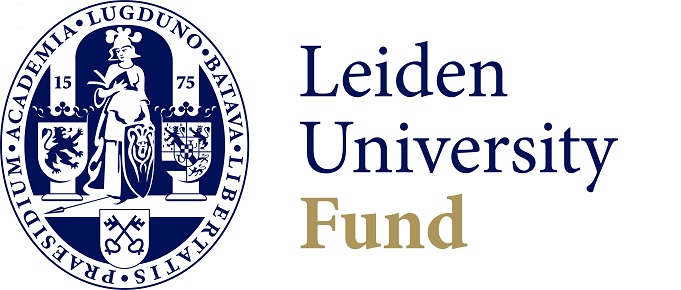
Strange and Veldhuis ask the questions no one has ever asked before
Invasive aquatic plants are finding their way to the Netherlands with increasing ease. The same is true for mosquito species. This can endanger public health, for instance through mosquito-borne disease, and biodiversity. Ecologists Emily Strange and Michiel Veldhuis are researching whether there is a link between the increase in invasive floating aquatic plants and mosquitoes. With support from LUF, the researchers hope to implement their programme on an international scale.
What triggered the research?
Strange and Veldhuis are actually entering uncharted territory with their research. This is odd because it is widely believed that specific invasive aquatic plants reduce mosquito populations. However, this supposed knowledge proves to be based more on flimsy studies and suggestion than on a solid scientific basis. ‘Emily Strange delved into it and the opposite appears to be true’, says Michiel Veldhuis.
Strange saw the link four years ago during a colleague’s presentation on the distribution of mosquito species. ‘When I saw his maps they matched almost exactly with the maps of invasive aquatic plants that I was working on’, she recalls.
‘I assumed that someone had already looked into this connection but to my great surprise they hadn’t. There was a study on the link between malaria and invasive plants that referred to various other studies. But all the references turned out to contain purely anecdotal and no experimental evidence.’
Support Emily en Michiel
Dr Emily Strange: ‘We want to use Environmental DNA (eDNA) for our field research. We use it to analyse water samples for the DNA of all the species living in them. eDNA is fast and accurate, but it’s also very expensive. Thank you so much for your support.’
Donate nowHow are things going and what else do they need?
Strange and Veldhuis started the second phase of their research this year: fieldwork in South Africa. ‘You want to find out whether the same thing happens in nature as in greenhouses’, says Veldhuis. South Africa, where both were already conducting research, is a good place for this, Strange explains. ‘They have been dealing with invasive aquatic plants there for much longer. And they have the same native and invasive mosquito species. We can use a lot of data that has already been collected there. South Africa can be our crystal ball to predict the future.’
For the European data, the researchers plan to launch a campaign from Portugal to the Netherlands. They will use eDNA for this. ‘All water organisms leave behind DNA in their surroundings. With eDNA you get an instant snapshot of aquatic life’, says Veldhuis.
‘Collecting biodiversity data from water is really labour intensive and you need really specific expertise. eDNA is faster but you need money for it’, says Strange.
Link between invasive aquatic plants and mosquitoes
This video can not be shown because you did not accept cookies.
You can leave our website to view this video.What was the first step?
‘We can see that aquatic plants are spreading across the world − and mosquitoes too’, says Veldhuis. ‘The question is: is there a link?’ To find out, they carried out the first studies at the Leiden Hortus botanicus. They used tanks with and without aquatic plants and added mosquito larvae and predatory fish to find out how the mosquito population behaves.
‘We discovered that mosquito larvae develop much faster with certain aquatic plants and that there are differences in their survival rate’, says Strange. ‘So there is interaction. The next question is: Why? To answer this, we have to expand the project. There are so many different mechanisms at play. Is it the chemical influences of the plants? Is it because of predators?’
What special collaborations have emerged?
The project brings together two fields that previously operated separately: research on invasive aquatic plants and research on mosquitoes. ‘And a third has been added: anthropology’, says Strange. ‘Anthropologists can tell us how by asking the right questions, we can collect the cleanest possible data from people.’
Strange enjoys the interdisciplinary contact. ‘It takes more time when you have so many people with an enormous amount of knowledge around the table. The challenge is to create a level playing field. You can do so by talking and listening to each other.’
Strange and Veldhuis can see a lot of enthusiasm in colleagues. ‘We got immediate reactions to our film for LUF’, says Strange. ‘This has resulted in us working with colleagues in Belfast and receiving an offer to share data from Ethiopia. This has the potential to become a truly global study.’
They are drawing on knowledge from the Leiden University Institute of Environmental Sciences (CML) and are sharing knowledge with the National Institute for Public Health and the Environment (RIVM). South African PhD candidate Tressia Chikodza is taking on the research in the Netherlands. ‘That’s another nice aspect of this research’, says Veldhuis. ‘People often think: “We in the Netherlands know how it all works. We’ll bring our knowledge to Africa.” But we can actually learn a lot from them.’
What are the specific goals of this research?
‘One of the goals is to show that we in Europe can learn from other countries’, says Strange. ‘We want to give examples: yes, there are problems but there are also solutions. We can already see great collaborations emerging between European and African institutions.
‘Ultimately, the goal is to determine whether there is a link between the advance of aquatic plants and the increase in mosquito populations so we know where to intervene. That is one of the interesting aspects of this research: it is applied science and practical solutions can result from new questions that no one had ever asked before, when these are huge challenges facing society.’
Text: Eric de Jager
Support this field research
Your donation will help Emily and Michiel use eDNA for this important field research.
Donate here